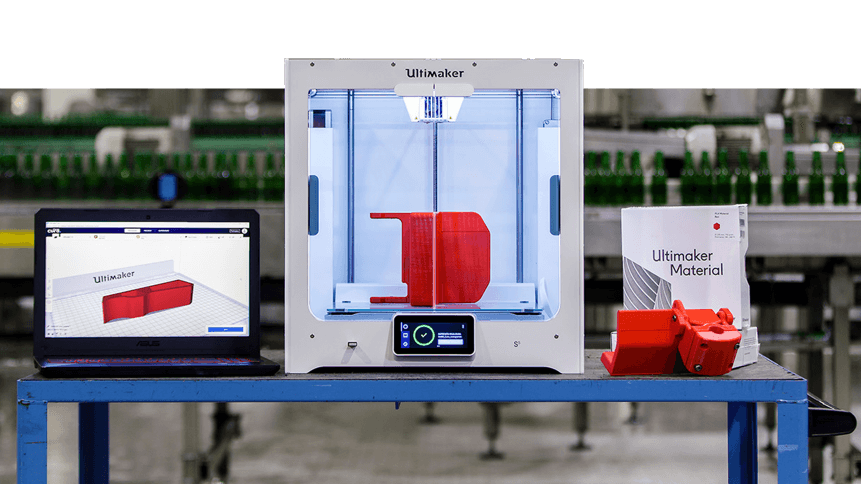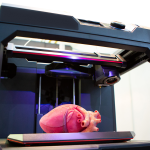Heineken brings 3D printing to the production line

Boasting more than 150 breweries around the world, Heineken is one of the world’s largest producers of beer.
That global demand means the Dutch brewer must constantly pursue ways to make production more efficient and cost-effective, and that includes paying due consideration to the potential benefits of emerging technologies.
Its Seville plant is able to produce up to 500 million liters of beer per year, serving as the production hub for brands such as Desperados, Cruzcampo, Heineken and Amstel, which is then shipped throughout Spain and beyond.
In efforts to optimize manufacturing methods and the plant’s buzzing production schedule, Packaging Manager, Juan Padilla González, deployed 3D printing technology, with goals of improving manufacturing across output, uptime, and safety.
Using Ultimamker S5 printers, Heineken’s Seville plant is now able to print its own part on-demand in a 3D printing lab. With less reliance on outsourcing, the company claims to have increased production uptime and significantly cut costs.
“We’re still in the first stages of 3D printing but have already seen a reduction of costs in the applications that we found by 70 – 90 percent, and also a decrease of delivery time of 70 – 90 percent,” said González.
Trials with the technology reportedly began with the creation of custom safety latches and key depositories. Not only useful, but this also helped create an awareness and appreciation of the technology among workers, which helped in identifying where 3D printing technology could provide a solution.
According to Heineken, the first application was in printing spare parts for machinery. With 3D printing, the brewery was able to avoid outsourcing metal parts— a time-consuming and expensive process, particularly when parts were discontinued or needed importing.
But the plant could also use its new hardware to experiment with new part redesigns, thanks to the ability to rapidly create and test new parts on-site.
“For example, a metal part used with a quality sensor on a conveyor belt would often knock bottles over, creating a blockage, or ejecting good bottles onto the ground,” said Heineken.
“Redesigned 3D printed parts prevented this problem, saving bottles, money, and time.”
YOU MIGHT LIKE

3D printing is finding its place in enterprise
A popular application of 3D printing technology by other enterprises, the Seville plant also discovered it could make use of 3D printing technology to create custom tools used in maintenance and quality control with material that could withstand stress and heat.
One of these tools was the stopper tool, which is used to adjust the columns of guiding wheels that apply bottle labels— the production cost of this tool was reduced by 70 percent, and delivery time cut from three days to just one.
As a result of the year-long pilot, Heineken has improved safety within its Spanish plant and reduced the cost and lead time of sourcing spare parts and tools.
“3D printing has proven to be a technology that helps us, brings value to us, and enables our people to work more efficiently,” said González.









